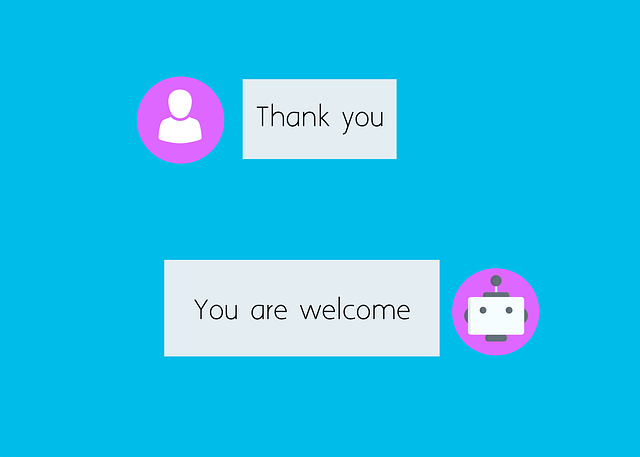An ecommerce chatbot is an AI-driven virtual assistant that enhances customer experience, optimizes support, and drives sales through natural language conversations on messaging platforms or websites. Key features include product recommendations, order tracking, and 24/7 support, with a focus on streamlining shopping and offering personalized interactions. Building an effective ecommerce chatbot involves selecting technology with NLP, pre-built modules, and secure payment gateways, training with diverse data, and fine-tuning model parameters. Integration into existing systems, thorough testing, and continuous improvement based on user feedback and KPIs are crucial for success.
An ecommerce chatbot is a game-changer, revolutionizing the way businesses interact with customers. This article guides you through building an effective AI-powered assistant tailored for your online store. We’ll explore key features, essential technology choices, and best practices for training your AI model. From integration to continuous improvement, learn how to create a bustling chatbot that enhances customer service, drives sales, and navigates the complex world of ecommerce with ease.
- Understanding the Ecommerce Chatbot: Definition and Purpose
- Identifying Key Features for Your Ecommerce Chatbot
- Choosing the Right Technology and Development Tools
- Training and Fining-Tuning Your AI Model
- Integration, Testing, and Continuous Improvement
Understanding the Ecommerce Chatbot: Definition and Purpose

An ecommerce chatbot is a type of AI-powered virtual assistant designed to interact with customers through natural language conversations, primarily via messaging platforms or websites. Its primary purpose is to enhance customer experience, streamline support processes, and drive sales within online stores. By understanding user queries and providing relevant, personalized responses, these chatbots offer instant assistance, answer frequently asked questions, guide users through product searches, and even facilitate transactions.
Ecommerce chatbots are built using advanced natural language processing (NLP) and machine learning algorithms, enabling them to learn from customer interactions and continuously improve their performance. They can be integrated into various touchpoints along the customer journey, from initial product discovery to post-purchase support, creating a seamless and engaging shopping experience while increasing efficiency and reducing operational costs for businesses.
Identifying Key Features for Your Ecommerce Chatbot

When building an AI chatbot for e-commerce, understanding your target audience and their needs is paramount. Identify key features that will enhance customer experience, such as product recommendations, order tracking, and 24/7 support. An effective ecommerce chatbot should streamline shopping processes, providing quick answers to common queries, and personalizing interactions based on user behavior.
Focus on integrating relevant functionalities like intuitive search, easy navigation, and a conversational interface. Ensure the chatbot can handle various tasks, from assisting with product selection to resolving payment issues. By prioritizing these features, you create a seamless and efficient shopping experience, fostering customer satisfaction and loyalty in the competitive e-commerce landscape.
Choosing the Right Technology and Development Tools

When building an AI chatbot, especially for an ecommerce platform, selecting the appropriate technology and development tools is a strategic step. The right choice can significantly enhance the chatbot’s performance, scalability, and integration with your existing systems. Look for platforms that offer pre-built modules and APIs to streamline development. These tools often provide natural language processing (NLP) capabilities, enabling your chatbot to understand and respond to customer queries effectively.
For ecommerce chatbots, consider solutions designed with conversational commerce in mind. These platforms typically include features like product recommendation engines, inventory integration, and secure payment gateways. By leveraging such technologies, you can create a seamless shopping experience for users, from product discovery to checkout. Ensure the chosen tools support customization to tailor the chatbot’s behavior and responses to align with your brand’s voice and customer preferences.
Training and Fining-Tuning Your AI Model

After selecting or creating your initial AI model, the next crucial step is training and fine-tuning. This involves feeding your model vast amounts of relevant data—in the context of an ecommerce chatbot, this could be customer inquiries, product descriptions, and purchase history. The more diverse and high-quality this data, the better your chatbot’s performance will be in understanding and responding to user queries accurately.
During fine-tuning, you adjust the model’s parameters to optimize its ability to generate contextually appropriate responses. This process often includes testing, evaluating, and iteratively improving the model. By continually refining your AI model, you ensure that your ecommerce chatbot delivers accurate, relevant, and engaging conversations, ultimately enhancing the customer experience.
Integration, Testing, and Continuous Improvement

After developing your AI Chatbot, integration is a crucial step to ensure seamless interaction with your platform, whether it’s a website or an e-commerce chatbot. Integrate the chatbot into your existing systems and workflows by connecting it to your database, customer relationship management (CRM) tools, and other relevant applications. This allows the chatbot to access and utilize real-time data, providing accurate and contextually aware responses. Testing is paramount to guarantee the chatbot’s effectiveness and reliability. Conduct thorough tests to identify and rectify any bugs or inconsistencies in its performance. Utilize various testing methodologies, including unit testing for individual components and end-to-end testing to simulate real-user interactions. Continuous improvement is essential to keeping your AI Chatbot up-to-date and aligned with user needs. Regularly gather user feedback, analyze chatbot interaction logs, and monitor key performance indicators (KPIs) such as response accuracy, customer satisfaction scores, and conversion rates. Use this data to refine the chatbot’s algorithms, expand its knowledge base, and enhance its conversational abilities.
Building an effective ecommerce chatbot involves a strategic approach from understanding its purpose to choosing the right technology and continuously refining its performance. By identifying key features, selecting suitable development tools, training robust AI models, and ensuring seamless integration, your chatbot can enhance customer engagement, provide 24/7 support, and drive sales in today’s competitive market. An ecommerce chatbot is not just a tool—it’s a game-changer that can transform the way you interact with your customers.
